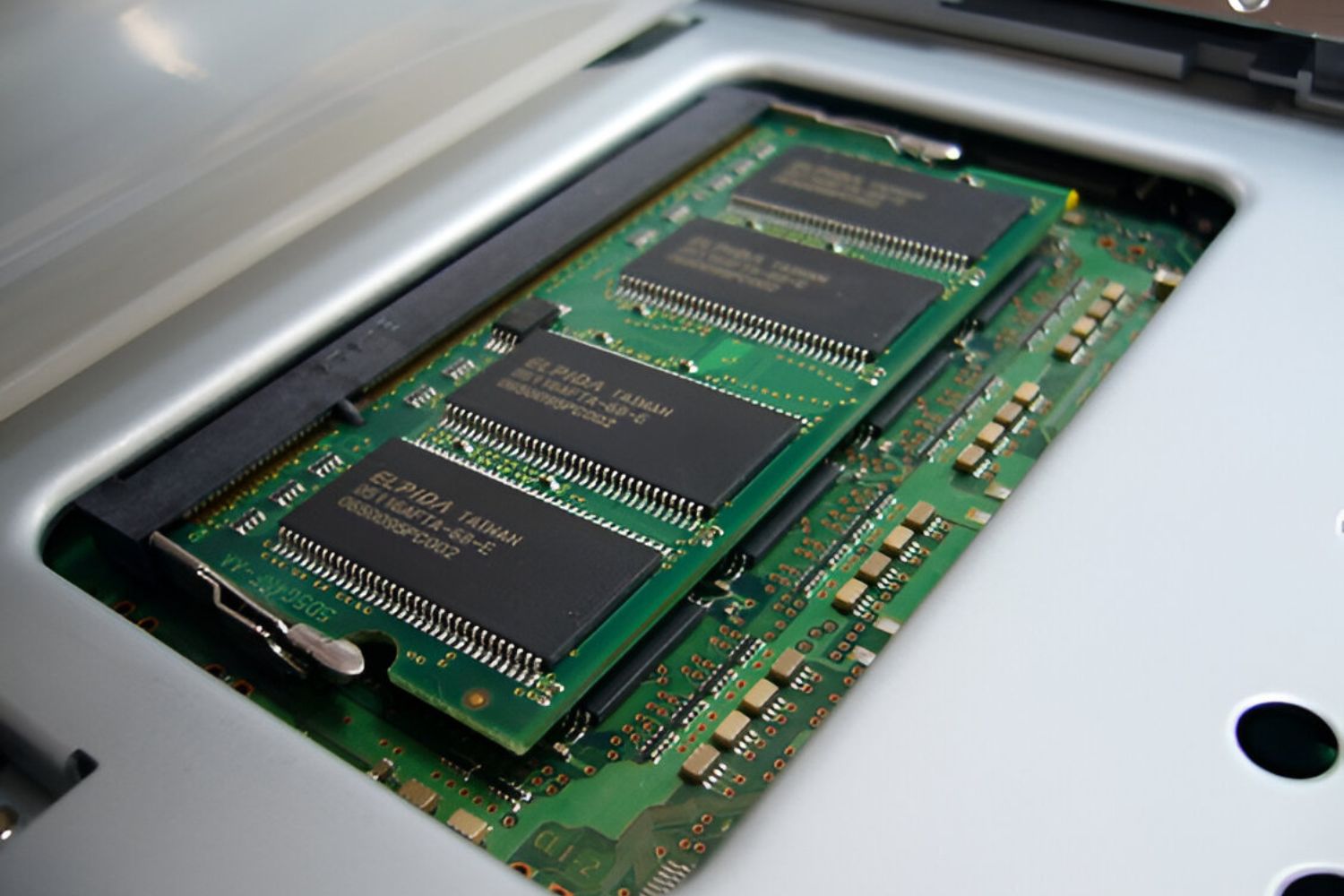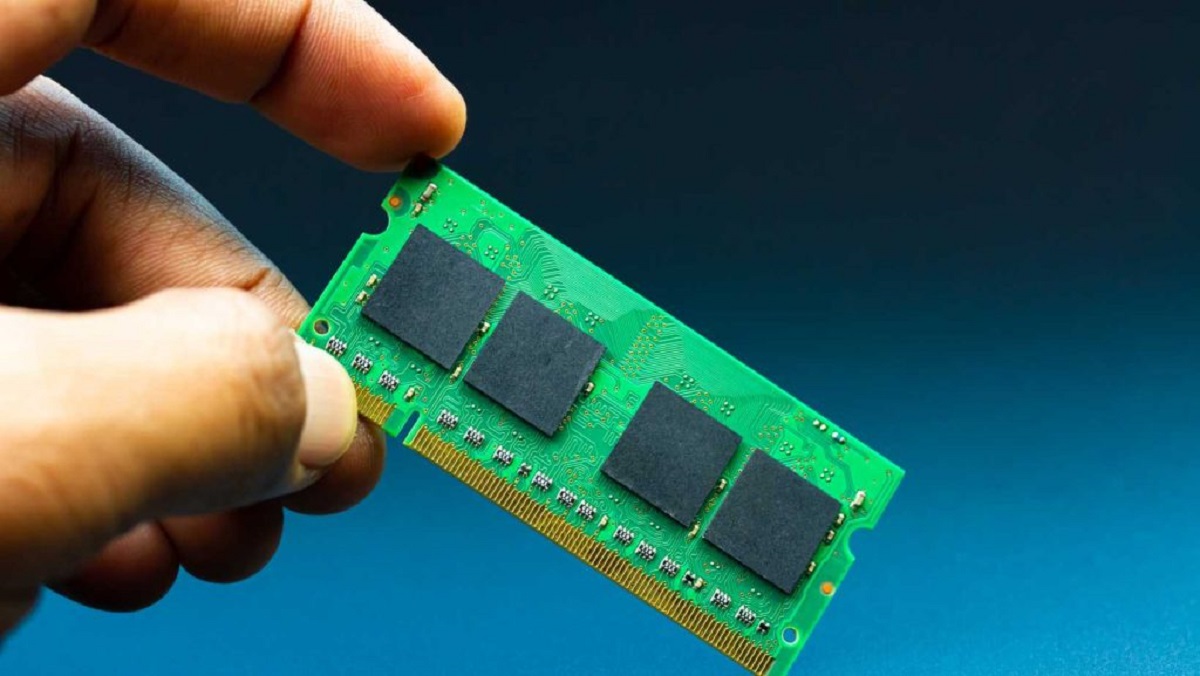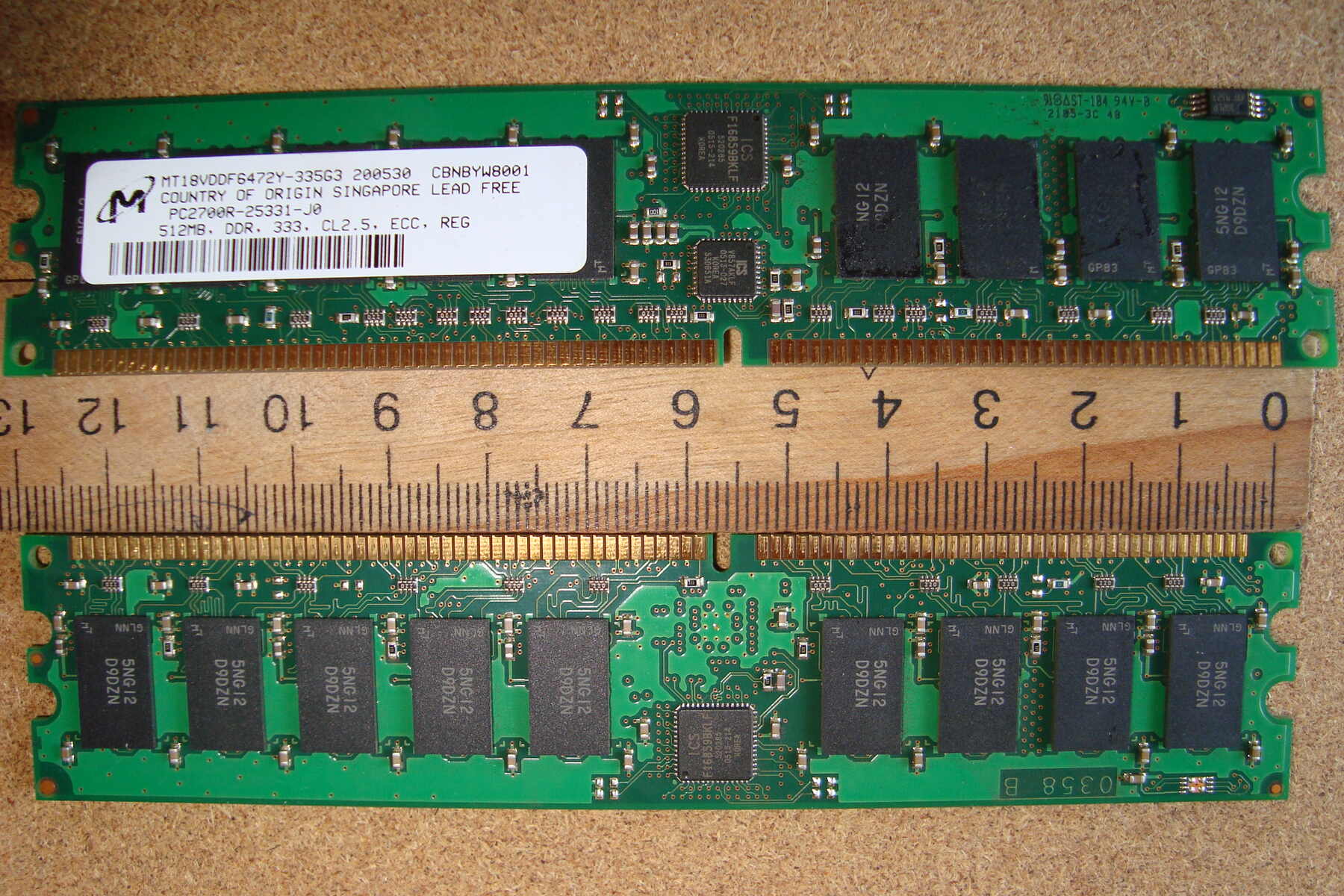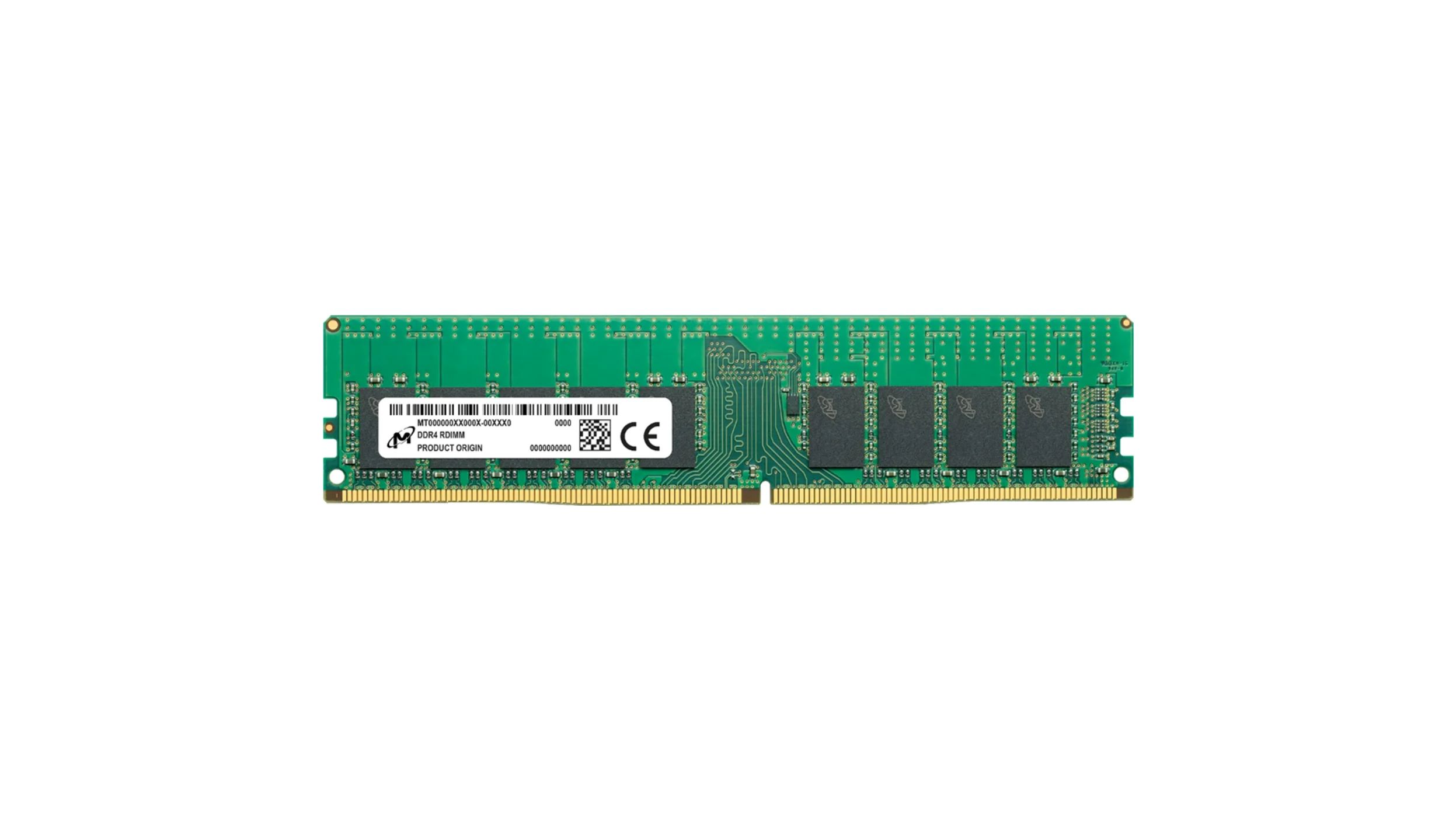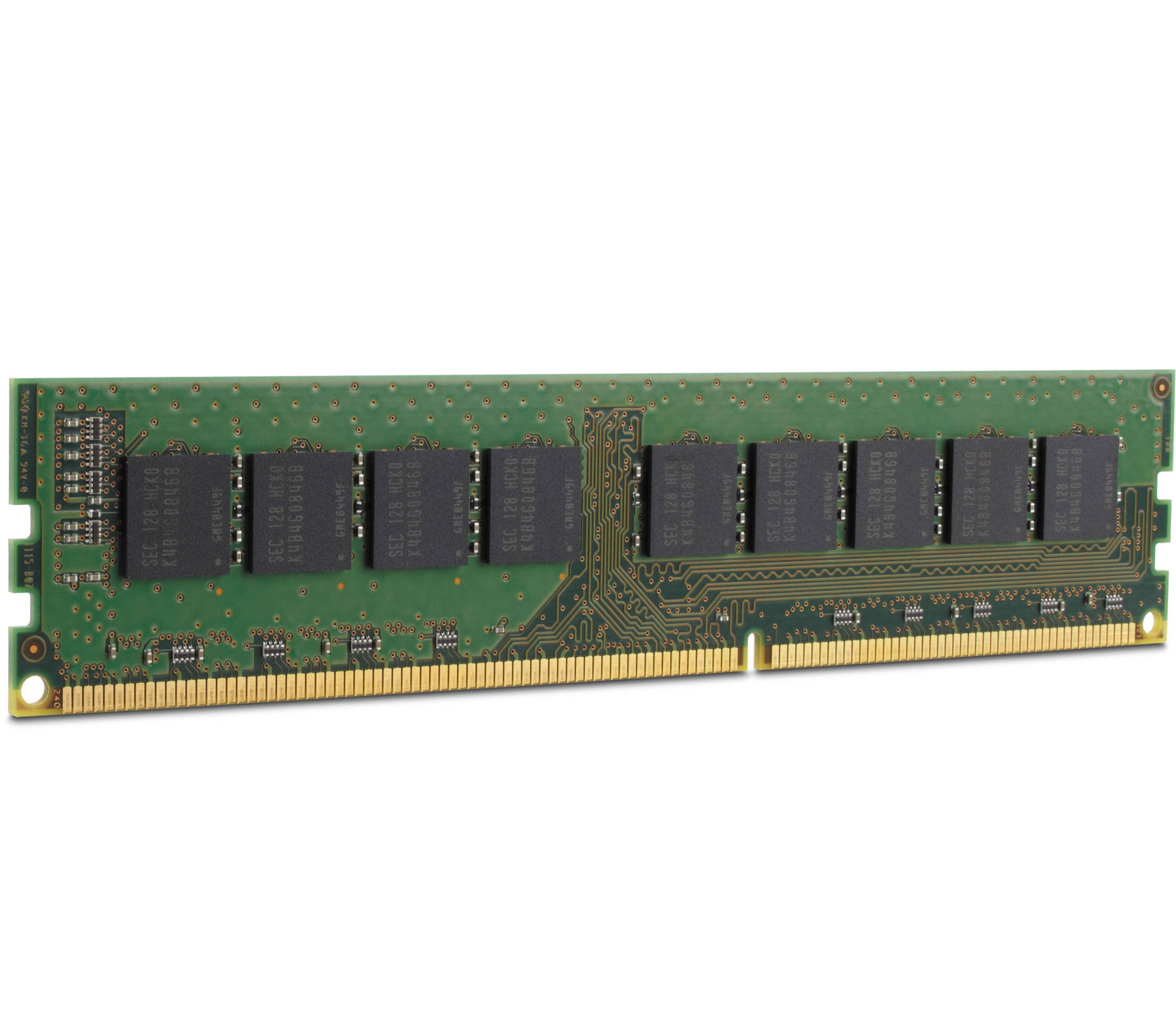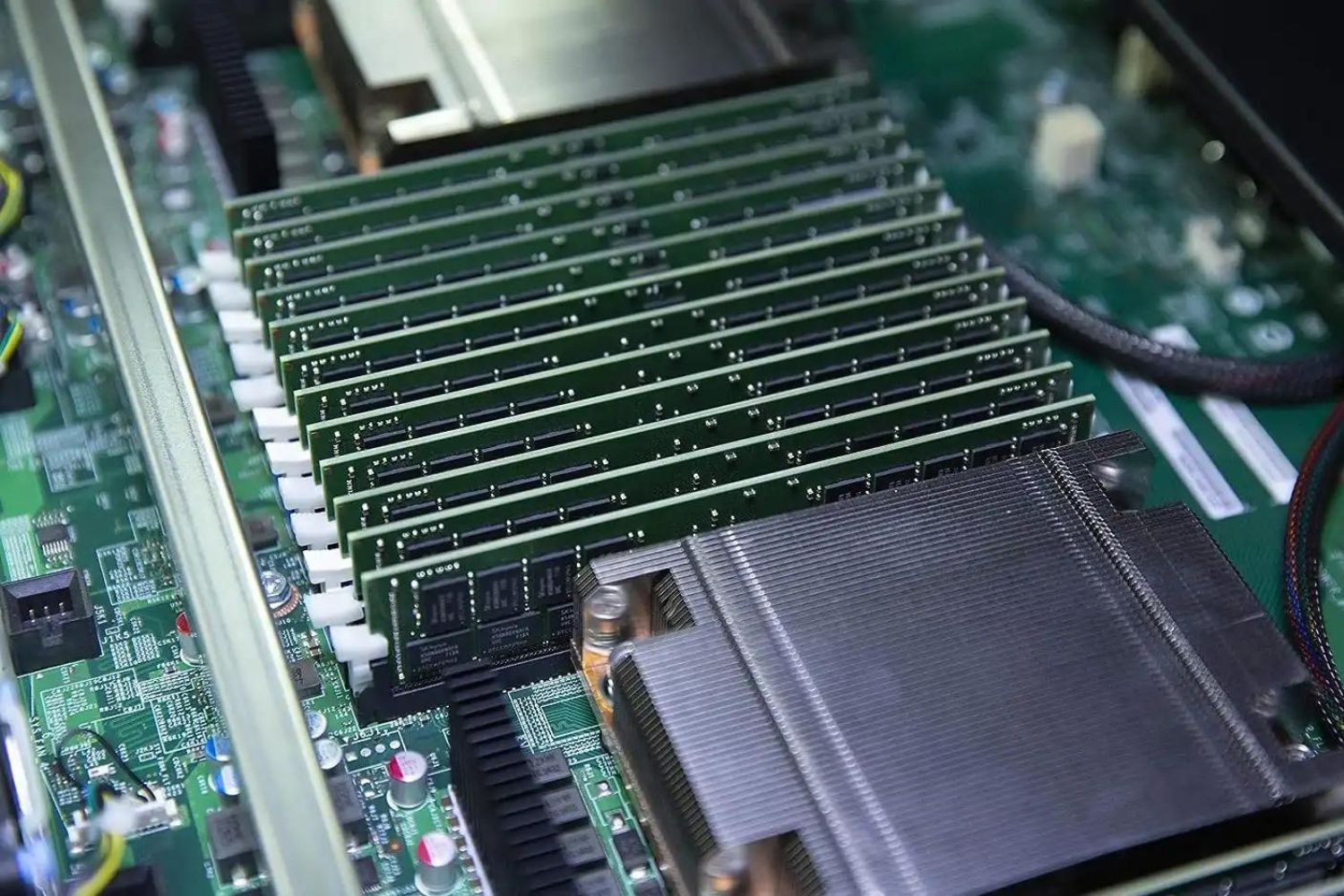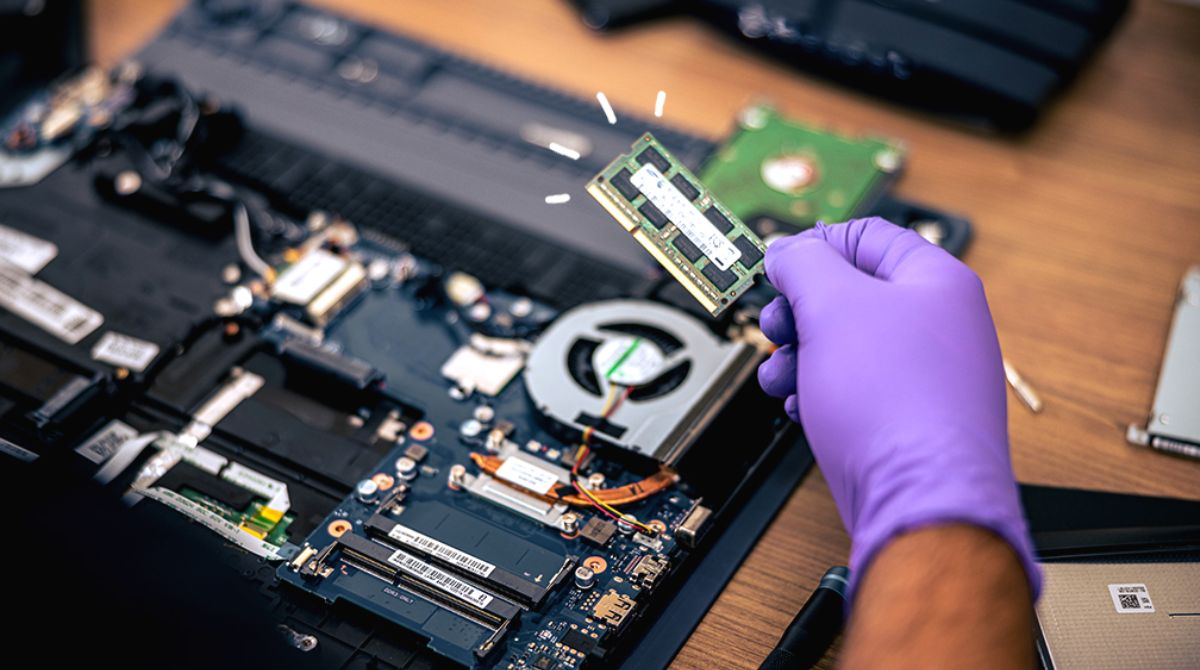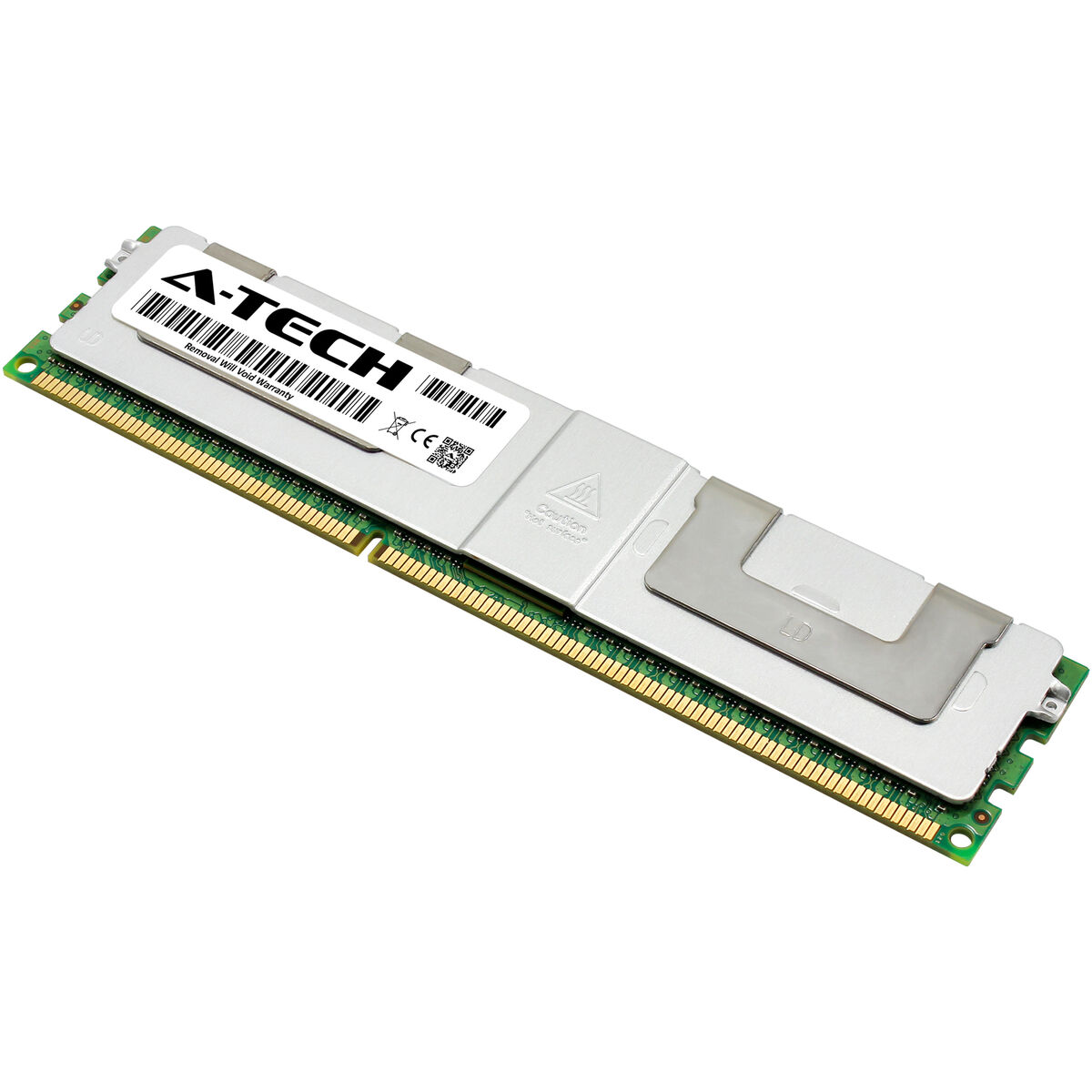Introduction
Random Access Memory (RAM) is a crucial component of a computer system, responsible for temporarily storing and accessing data that the CPU needs to perform tasks. However, RAM is not immune to errors, and when a bit of data gets corrupted, it can lead to system instability and data loss. This is where Error-Correcting Code (ECC) comes into play.
ECC is a technology designed to detect and correct these data errors in RAM. It adds an extra level of protection to ensure the integrity and reliability of the data stored in memory. ECC has become particularly important in systems that require high levels of accuracy and error-free operation, such as servers, workstations, and mission-critical machines.
So, how exactly does ECC work? And what are the different types of ECC RAM available? In this article, we will delve into the details of ECC in RAM, exploring its capabilities, benefits, and potential drawbacks.
Explanation of ECC
Error-Correcting Code (ECC) is a mechanism employed in memory systems to detect and correct errors in data. It works by adding extra bits to each memory word, allowing the system to identify and fix single-bit errors, and in some cases, even detect and correct multi-bit errors.
ECC operates on the principle of parity, a form of redundancy check. Parity involves adding an extra bit to the data word, either as odd or even parity. For odd parity, the additional bit is set so that the overall number of bits in the word, including the parity bit, is odd. Similarly, for even parity, the total number of bits is made even.
The parity bit is calculated by the memory controller or controller integrated within the memory module. It is generated based on the logical operation performed on the existing data bits. During a write operation, the parity bit is stored along with the data in memory. When the data is read back, the memory controller recalculates the parity and compares it with the stored parity bit. If a mismatch occurs, it indicates an error, and the ECC mechanism can then determine and correct the erroneous bit.
ECC can correct single-bit errors by flipping the incorrect bit to its correct value. It achieves this by using sophisticated mathematical algorithms, such as the Hamming code, which makes use of the additional parity bits to pinpoint the exact bit that is corrupted. In cases where multiple bit errors are detected, ECC can identify the error but may not be able to correct it.
It’s important to note that ECC is only effective in correcting errors within the memory module itself. It cannot detect or fix errors that occur during data transmission or other parts of the system. For comprehensive error detection and correction, ECC should be complemented with other mechanisms, such as error detection and correction codes used in networking protocols.
Overall, ECC plays a critical role in ensuring data integrity and system reliability for memory-intensive applications and mission-critical systems. By employing ECC technology, users can confidently rely on their systems to deliver accurate and error-free operation.
How ECC protects against errors
Error-Correcting Code (ECC) is vital in safeguarding computer systems against data errors in RAM. It provides an extra layer of protection that can detect and correct errors caused by various factors, including cosmic radiation, electrical interference, and manufacturing defects.
ECC protection begins by adding redundancy to the data stored in memory. This is achieved by appending extra bits, typically known as check bits or parity bits, to each memory word. These additional bits contain information derived from the data bits and are used to detect and correct errors.
When data is written to memory, ECC calculates and stores the parity bits along with the data. During a subsequent read operation, the ECC mechanism recalculates the parity bits and compares them with the stored values. If a discrepancy is detected, it signifies that an error has occurred.
ECC can detect single-bit errors, which occur when a single memory bit flips from 0 to 1 or vice versa. The mechanism can then use the parity information to identify and correct the erroneous bit, restoring the data to its original state. This process occurs transparently to the software running on the system, ensuring uninterrupted operation without requiring manual intervention.
In addition to detecting and correcting single-bit errors, some ECC implementations offer more advanced capabilities. They can also detect multi-bit errors, where multiple bits within a memory word experience simultaneous errors. Although these errors cannot be corrected, the system can at least identify their presence and take appropriate action, such as raising an error alert or triggering a system reset.
ECC protection extends beyond error correction. It also acts as a preventive measure by detecting errors before they lead to system crashes or data corruption. By regularly verifying the parity bits during read operations, ECC can identify errors that might have gone unnoticed otherwise. This proactive approach allows for prompt error detection and mitigation, ensuring system stability and data reliability.
Overall, ECC serves as a critical defense mechanism against data errors in RAM. It provides peace of mind to users, knowing that their systems are equipped with reliable error-detection and correction capabilities. ECC’s ability to preserve data integrity makes it a fundamental feature in high-performance computing environments, where accuracy and dependability are paramount.
How ECC works in RAM
Error-Correcting Code (ECC) is a technology that is integrated into certain types of RAM modules to provide enhanced error detection and correction capabilities. ECC works by adding extra bits to each memory word, allowing for the identification and correction of errors that occur during storage or transmission.
The ECC process begins with the generation of parity bits. These additional bits are calculated based on the data bits within a memory word using specific algorithmic formulas. The number of parity bits added depends on the type of ECC being used, such as SECDED (Single Error Correction, Double Error Detection) or higher-level ECC schemes.
When data is written to the RAM, the parity bits are stored alongside the data bits. During the read operation, the ECC circuitry within the RAM module recalculates the parity bits based on the read data. It then compares the recalculated parity bits with the stored parity bits to detect any discrepancies.
If a single-bit error is detected, the ECC mechanism uses the parity information to determine the exact bit that is erroneous and corrects it. The corrected data is then provided to the CPU or other components for further processing. In the case of multi-bit errors that exceed the error correction capabilities of the ECC scheme being used, an error alert may be triggered to notify the system of the issue.
ECC works seamlessly in the background, transparently correcting errors without the need for user intervention. The error correction is performed at the hardware level, enabling the system to maintain high levels of accuracy and reliability without impacting overall performance.
It’s important to note that ECC is not a foolproof solution. While it can detect and correct errors within the RAM module itself, it cannot protect against errors that occur during data transmission or within other components of the system. Therefore, it is crucial to combine ECC with other error-detection and correction mechanisms at different layers of the system to achieve comprehensive error protection.
Overall, ECC in RAM provides an essential safeguard against data errors. By employing extra bits and advanced algorithms, ECC enhances the reliability and integrity of the data stored in memory, ensuring smooth system operation even in the presence of occasional errors.
Types of ECC RAM
Error-Correcting Code (ECC) RAM comes in various types, each offering different levels of error detection and correction capabilities. The most common types include:
- Single Error Correction, Double Error Detection (SECDED): This is the most prevalent type of ECC RAM. It can detect and correct single-bit errors and detect but not correct double-bit errors. SECDED ECC provides a good balance between error correction capabilities and cost-effectiveness, making it suitable for a wide range of applications.
- Advanced ECC (AECC): AECC builds upon the capabilities of SECDED ECC by introducing additional error detection and correction features. It can detect and correct both single-bit and certain multi-bit errors, providing a higher level of data integrity. AECC is commonly used in critical computing environments that demand maximum reliability.
- Chipkill ECC: Chipkill ECC is an advanced form of ECC that provides enhanced fault tolerance. It is designed to correct errors not just within individual memory chips but also across multiple chips. Chipkill ECC can correct up to simultaneous single-bit errors or detect and correct up to certain multi-bit errors. This type of ECC is typically found in high-end servers and mission-critical systems.
- Burst Error-Correcting Code (BCH): BCH ECC is a powerful error correction scheme that can handle both single-bit errors and burst errors. Burst errors occur when multiple bits in a sequence are corrupted. BCH ECC is commonly used in memory systems where bursts of errors are more likely to occur, such as in satellite communication or storage devices.
- Vertical Redundancy Check (VRC): VRC is a simpler form of ECC that uses parity bits to detect errors but does not have error correction capabilities. It can detect single-bit errors but cannot correct them. VRC is less common in modern ECC RAM modules and is usually found in older systems.
It’s important to note that the availability of these ECC RAM types can vary depending on the specific memory technology being used, as well as the requirements and budget constraints of the computing system. Therefore, it is essential to consider the specific needs of the system when selecting the appropriate ECC RAM type.
Choosing the right type of ECC RAM ensures that the system can effectively detect and correct errors, providing a higher level of data reliability and system stability. The selection should be based on factors such as the criticality of the application, performance requirements, and budget considerations.
Benefits of using ECC RAM
Using Error-Correcting Code (ECC) RAM in computer systems offers several significant benefits in terms of data reliability, system stability, and overall performance. Here are some key advantages of using ECC RAM:
- Data Integrity: The primary benefit of ECC RAM is its ability to detect and correct errors in memory. By adding extra bits and employing advanced error correction algorithms, ECC RAM ensures that data stored in memory remains accurate and uncorrupted. This is particularly important for mission-critical systems and applications that require precise and error-free data processing.
- Improved System Stability: ECC RAM helps maintain system stability by automatically correcting errors that may cause system crashes or freezes. By detecting and fixing errors at the hardware level, ECC RAM prevents the propagation of errors and allows the system to continue operating smoothly without interruption.
- Reduced Data Loss: Errors in RAM have the potential to result in data loss, especially in environments where frequent power outages or system failures occur. ECC RAM helps minimize data loss by detecting and correcting errors as they happen. This ensures that valuable data remains intact and reduces the need for time-consuming data recovery processes.
- Enhanced Reliability in Critical Applications: ECC RAM is particularly valuable in applications where data integrity is of utmost importance, such as servers, workstations, and medical equipment. By safeguarding against errors, ECC RAM increases the reliability of these systems, leading to improved operational efficiency and reduced downtime.
- Long-Term Cost Savings: While ECC RAM may have a slightly higher cost compared to non-ECC RAM, its long-term benefits outweigh the initial investment. ECC RAM helps prevent costly errors and data corruption, reducing the need for hardware replacements and minimizing downtime. This can result in significant cost savings over the lifespan of the system.
- Industry Compliance: Many industries, such as finance, healthcare, and government sectors, require compliance with stringent data integrity standards. ECC RAM provides an important component in meeting these requirements and ensures that systems meet the necessary standards for data accuracy and security.
Overall, the use of ECC RAM provides significant advantages in terms of data integrity, system stability, and long-term cost savings. By investing in ECC RAM, users can have peace of mind knowing that their data is protected, their systems are reliable, and they are better equipped to handle critical tasks with accuracy and precision.
Drawbacks of using ECC RAM
While Error-Correcting Code (ECC) RAM offers numerous benefits, there are a few drawbacks to consider when using this type of memory in a computer system. These drawbacks include:
- Higher Cost: ECC RAM typically comes at a higher price compared to non-ECC RAM. This is primarily due to the additional circuitry and complexity required to implement the error detection and correction mechanisms. The increased cost of ECC RAM can be a limiting factor for budget-conscious consumers or those with less demanding computing needs.
- Performance Impact: The advanced error correction processes employed by ECC RAM can have a slight impact on system performance. The calculations required for error detection and correction introduce additional latency, which can result in a slight reduction in memory access speed. However, for most applications and everyday computing tasks, the performance impact is negligible and largely outweighed by the benefits of data integrity and system stability.
- Incompatibility: Not all systems are compatible with ECC RAM due to specific hardware and chipset limitations. ECC RAM requires motherboard support that includes the necessary circuitry to implement ECC functionality. Therefore, it is essential to ensure that the system is ECC-compatible before considering the purchase of ECC RAM.
- Limited Error Support: While ECC RAM can detect and correct errors within the memory module itself, it cannot protect against errors that occur during data transmission or in other system components. ECC RAM focuses on errors specific to the memory and does not offer comprehensive protection against other types of errors that may impact the system. Therefore, additional error detection and correction mechanisms may be required at different layers of the system for comprehensive error protection.
- Limited Availability: ECC RAM is not as widely available as non-ECC RAM. It may be more challenging to find ECC RAM modules that suit specific system requirements, especially for older or niche hardware configurations. This limited availability can make it more difficult to upgrade or replace ECC RAM modules when needed.
Despite these drawbacks, ECC RAM continues to be a preferred choice for environments that demand high levels of data integrity and system stability. For applications where accuracy and reliability are paramount, the advantages outweigh the drawbacks, making ECC RAM a worthwhile investment.
Conclusion
Error-Correcting Code (ECC) RAM plays a critical role in ensuring the integrity, reliability, and stability of computer systems. By adding extra bits and employing advanced error detection and correction mechanisms, ECC RAM can detect and correct errors in memory, providing a higher level of data accuracy and protection against data loss.
The use of ECC RAM offers several benefits, including enhanced data integrity, improved system stability, reduced data loss, and increased reliability in critical applications. ECC RAM is particularly valuable in industries where data accuracy and security are crucial, such as finance, healthcare, and government sectors.
While ECC RAM has some drawbacks, such as higher cost and potential performance impact, these limitations are outweighed by the long-term cost savings, improved system reliability, and compliance with industry standards that ECC RAM provides.
In conclusion, ECC RAM is a valuable investment for users who prioritize data integrity, system stability, and long-term reliability. By choosing ECC RAM, users can ensure that their systems operate with accuracy, minimal downtime, and robust protection against errors, ultimately leading to a more efficient and secure computing experience.







